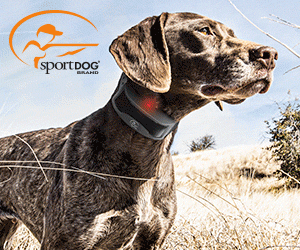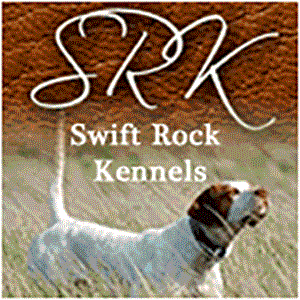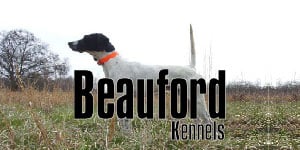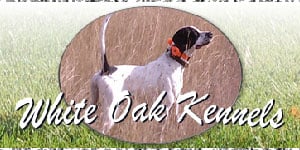Red-Legged Partridge - -
View Recipes | Gamebird Services | Gamebird Hunts | View Photos
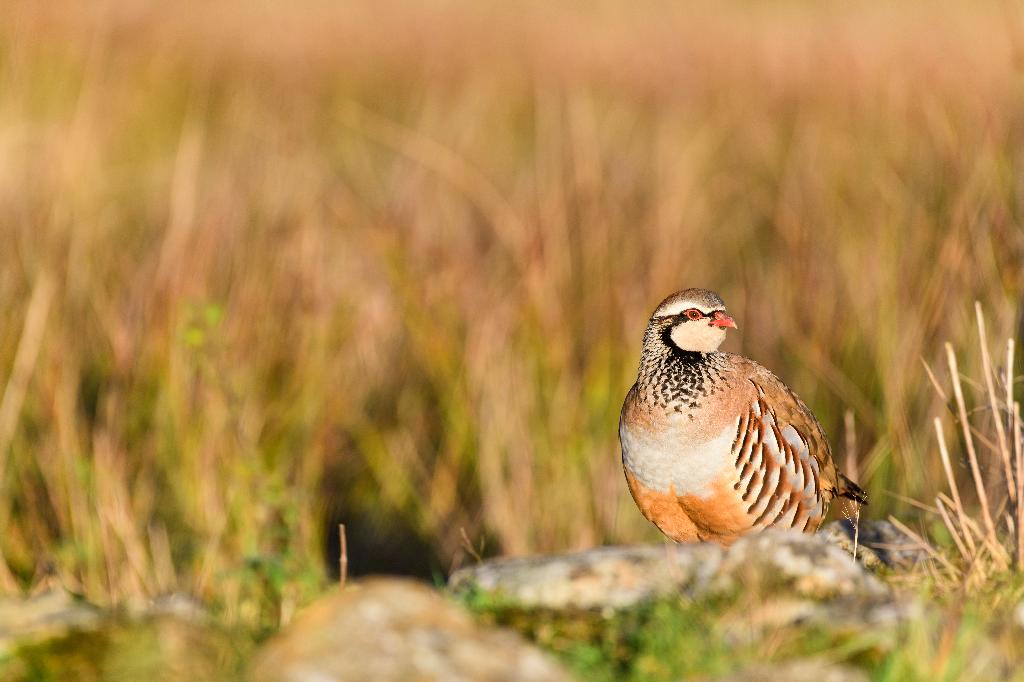
Description
The male red-legged partridge has sandy grey upperparts, including the upper wings. Its tail also has a sandy grey upper tail covert, although the rectrices are buffy chestnut. The chin and throat are white with a black stripe that runs from one eye to the other. The black stripe extends below the eyes to form a black collar. This black color extends down the neck to form black triangular patches on the breast. The lower sides of the neck are buffy brown. The belly and under tail coverts are rufous with the flanks marked profoundly by bright red-brown vertical bars. The bars have beautiful black & white edges on a pale blue-grey background.
The crown and nape are rufous-brown, although the crown has a short crest that emerges when the bird is excited or alarmed. The bill is red, short, curved, and chunky with pink or red legs with a small tarsal spur. The red-legged partridge has brown eyes surrounded with a red eye-ring. Adult birds have a length of 32 – 34 cm, a wingspan of 47 to 50 cm, and a 500 g weight.
Females have a similar plumage as males, although their heads and throats are duller. Also, females do not have a tarsal spur. On the other hand, immature red-legged partridge birds are darker, smaller with an inconspicuous pattern.
Habitat
These game birds prefer thriving in lowland areas and avoid wet and forest areas. This species is usually found in plantations, cultivated fields, grassy hillsides, orchards, and dry arable heaths, lands, and dunes.
Diet
The birds mainly feed on seeds, roots, leaves, grasses & legumes, although sometimes they prefer feeding on insects to obtain proteins. Red-legged partridge primarily feeds on the ground by gleaning seeds and insects & turning over or digging into the soil to get tubers or roots.
These game birds prefer thriving in a flock of up to 20 birds. They wander over pastures and fields looking for food. Its dull colors on its upper body help in camouflaging. However, when disturbed, they prefer running away instead of taking off (flying).
Breeding
The breeding season is around spring, with most birds being monogamous, although some are bigamous. Males choose the nest site, builds the nest, and establishes their territory in March or April. The nest is built on a shallow depression, lined with grass and hidden in the bush or tussocks of grass to protect the eggs and the young ones.
Females lay 10-16 creamy white eggs with reddish-brown spots. Incubation is done by the females only for 23 to 24 days. Sometimes, males sit on the nest if the females are absent. Both parents tend young ones, and they fly ten days after hatching.

